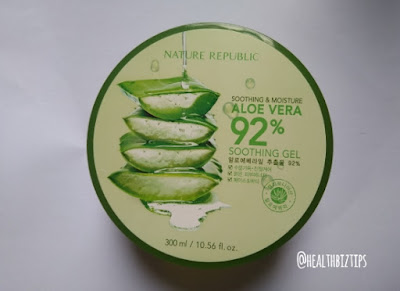What is the Lethal dose of Water?
If you think that drinking to much water is healthy, you better think again because there are known cases of death from excessive drinking of water.
Don't get me wrong, water is essential to life, but anything in excess can be harmful to the body. Even something as essential as water is no exception.
@healthbiztips by Arlene Gentallan
We need water to survive. In fact, humans can survive for several weeks without food provided they drink water. However, they can only last a couple of days without water intake. Ironically, excessive water intake can amount to death.
How much water intake can kill you?
Take for instance the case of a 17 year old Zyrees Oliver who drank 2 gallons of water and another 2 gallons of gatorade during his football practice. That's roughly 7.5 liters.
The teenager suffered massive brain swelling from drinking too much water resulting to irreversible brain damage that lead to his premature death (2014).
Drinking roughly 1000 ml of water in an hour especially during a strenuous activity can lead to water intoxication, also known as water poisoning.
Why is too much water deadly?
Our survival depends on our body's ability to maintain balance in it's system. In this case, we're talking about fluid and electrolyte balance.
Fluid is water. Electrolytes includes sodium, potassium, chloride, calcium, phosphate, and magnesium.
When a person drinks excessive amount of fluid over a short period of time, electrolytes inside the body gets diluted, making the electrolytes appear depleted.
Water intoxication, is a severe form of hyponatremia which refers to low levels of sodium in the blood. You may have heard of the electrolyte sodium from table salt which is composed of sodium and chloride.
Normal sodium level is from 135 to 145 mEq/L. If sodium level deflects from this normal range, problems occur. When sodium level drops below 135 mEq/L, it is called hyponatremia.
This messes up the body's fluid balance. Sodium, is an important electrolyte that regulates fluid balance, muscle contraction, and electrical current conduction in nerves.
Under normal condition, sodium is more concentrated outside of a cell compared to the inside of a cell. Sodium pulls water.
Too much fluid in the body drives water inside of cell where they cause the cell to swell. Brain cells are particularly vulnerable because of the little amount of space they are left to expand. Swelling can compress the brain within the skull causing symptoms ranging from headache to signs of potentially irreversible brain damage.
Our kidneys have the primary task of regulating excess fluid intake by flushing excess fluid through urination, but drinking large amount of water over a short period of time jeopardizes this tight control. The kidneys is unable to get rid of excess fluid at such short notice.
According to the website Scientific American, a normal functioning kidney can illuminate 800 to 1000 ml of fluid every hour. However, it is reduced to roughly 100 ml per hour if the person is doing strenuous physical activity like running a marathon.
Thus, consuming excessive amount of water rapidly during a strenuous activity can do even more harm.
Signs and symptoms of water intoxication:
Water poising can ultimately result to death.
Don't get me wrong, water is essential to life, but anything in excess can be harmful to the body. Even something as essential as water is no exception.
 |
| What is the Lethal dose of Water? |
@healthbiztips by Arlene Gentallan
We need water to survive. In fact, humans can survive for several weeks without food provided they drink water. However, they can only last a couple of days without water intake. Ironically, excessive water intake can amount to death.
Did you know that an adult human body is made-up of 60% water? It may sound ridiculous that excess water intake can kill, that is, if you don't understand the basics.
How much water intake can kill you?
Take for instance the case of a 17 year old Zyrees Oliver who drank 2 gallons of water and another 2 gallons of gatorade during his football practice. That's roughly 7.5 liters.
The teenager suffered massive brain swelling from drinking too much water resulting to irreversible brain damage that lead to his premature death (2014).
Drinking roughly 1000 ml of water in an hour especially during a strenuous activity can lead to water intoxication, also known as water poisoning.
Why is too much water deadly?
Our survival depends on our body's ability to maintain balance in it's system. In this case, we're talking about fluid and electrolyte balance.
Fluid is water. Electrolytes includes sodium, potassium, chloride, calcium, phosphate, and magnesium.
When a person drinks excessive amount of fluid over a short period of time, electrolytes inside the body gets diluted, making the electrolytes appear depleted.
Water poisoning happens when sodium in the blood drops low because it gets diluted from intake of too much water.
Water intoxication, is a severe form of hyponatremia which refers to low levels of sodium in the blood. You may have heard of the electrolyte sodium from table salt which is composed of sodium and chloride.
Normal sodium level is from 135 to 145 mEq/L. If sodium level deflects from this normal range, problems occur. When sodium level drops below 135 mEq/L, it is called hyponatremia.
This messes up the body's fluid balance. Sodium, is an important electrolyte that regulates fluid balance, muscle contraction, and electrical current conduction in nerves.
Under normal condition, sodium is more concentrated outside of a cell compared to the inside of a cell. Sodium pulls water.
Too much fluid in the body drives water inside of cell where they cause the cell to swell. Brain cells are particularly vulnerable because of the little amount of space they are left to expand. Swelling can compress the brain within the skull causing symptoms ranging from headache to signs of potentially irreversible brain damage.
Our kidneys have the primary task of regulating excess fluid intake by flushing excess fluid through urination, but drinking large amount of water over a short period of time jeopardizes this tight control. The kidneys is unable to get rid of excess fluid at such short notice.
According to the website Scientific American, a normal functioning kidney can illuminate 800 to 1000 ml of fluid every hour. However, it is reduced to roughly 100 ml per hour if the person is doing strenuous physical activity like running a marathon.
Thus, consuming excessive amount of water rapidly during a strenuous activity can do even more harm.
Signs and symptoms of water intoxication:
- headache
- diarrhea
- nausea
- vomiting
- dizziness
- muscle cramps
- lightheadedness
- confusion
- seizure
- coma
Water poising can ultimately result to death.







